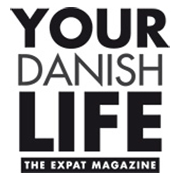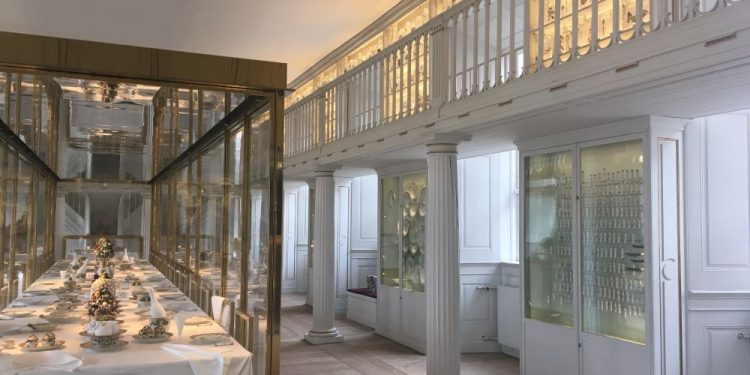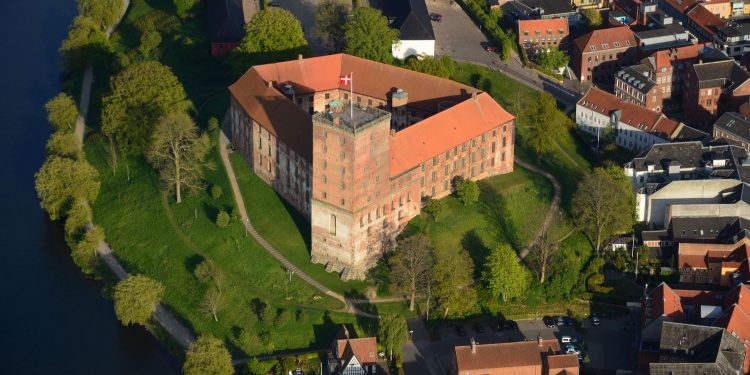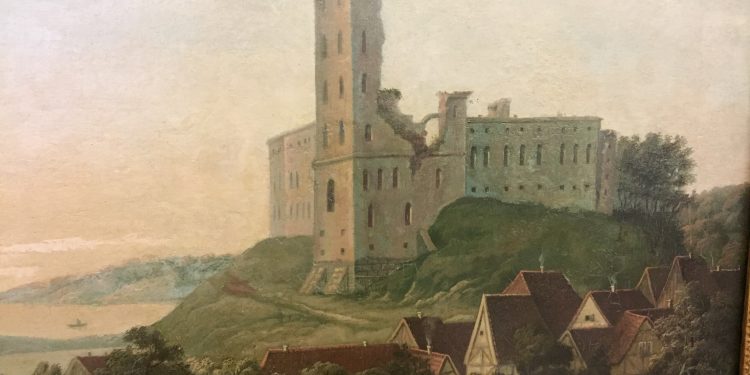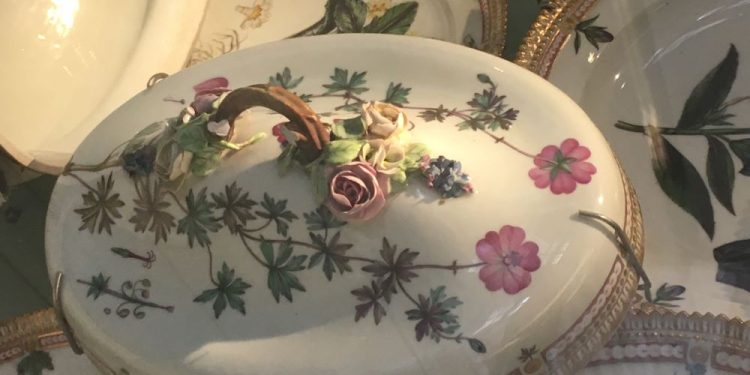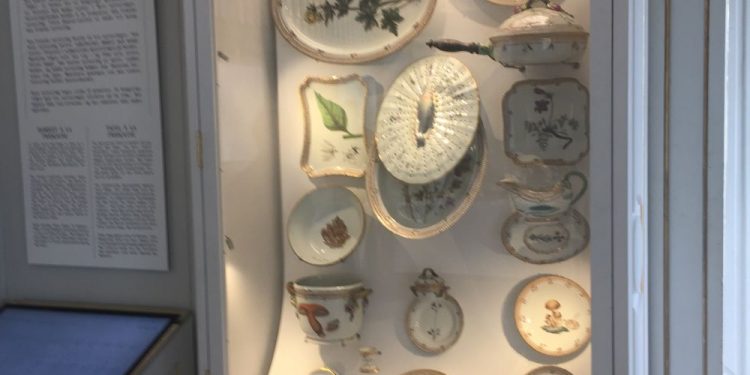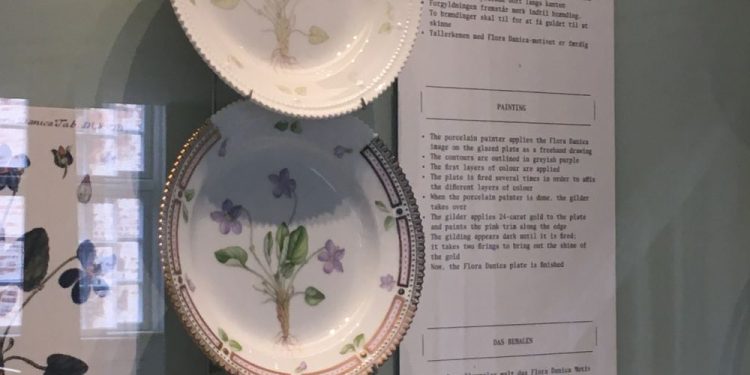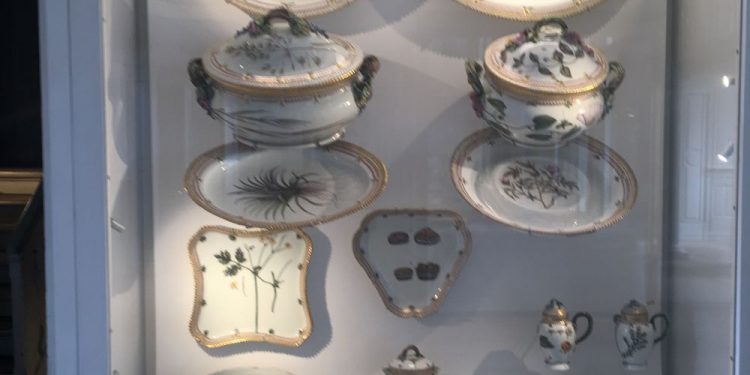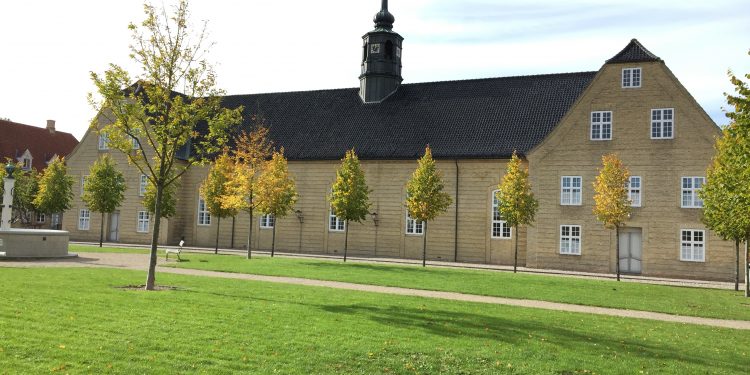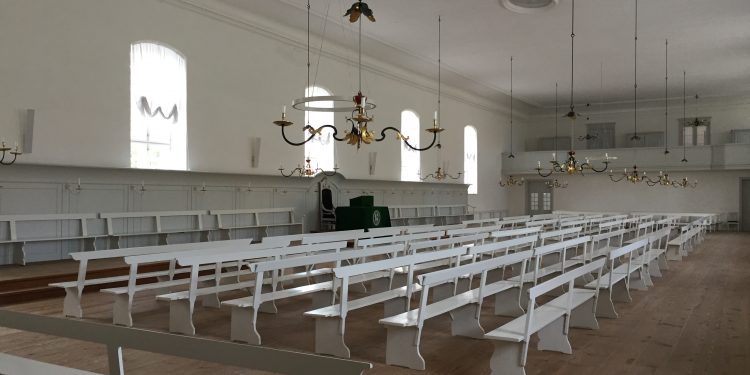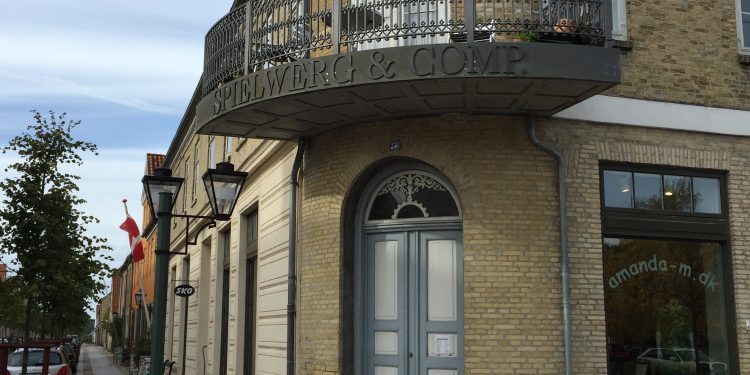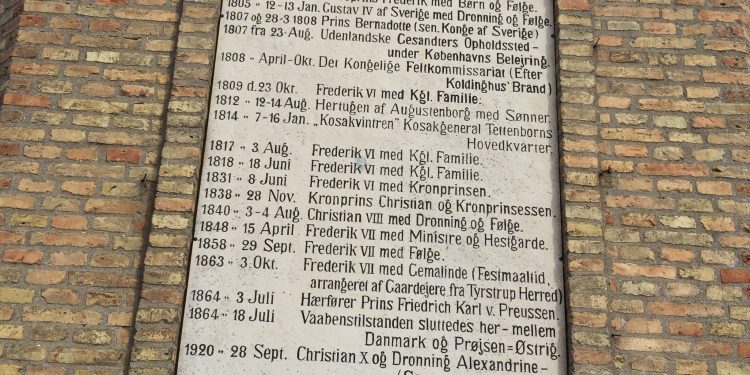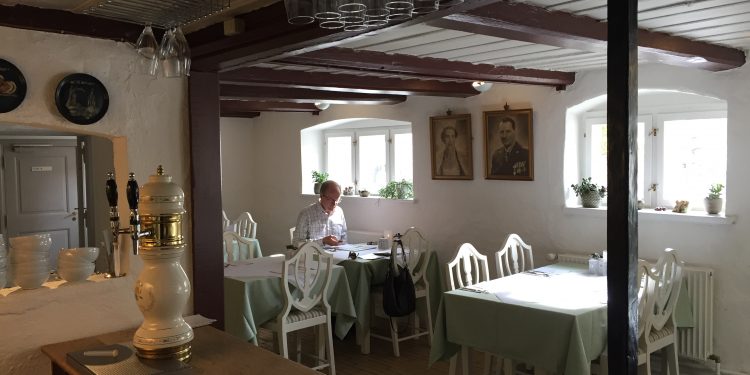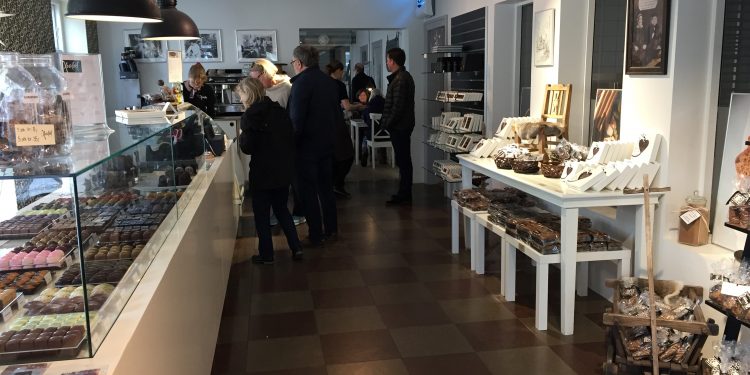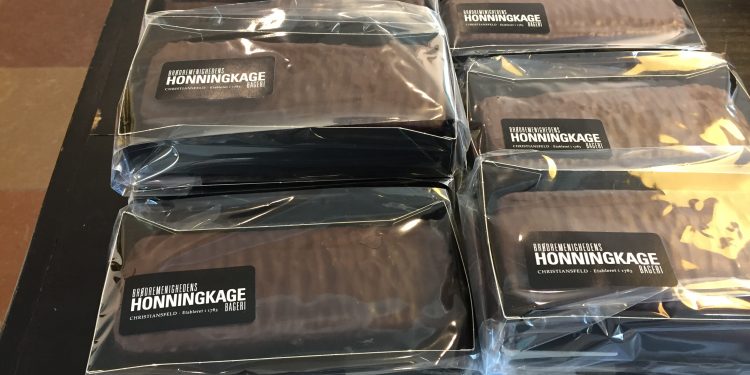One day trip to Koldinghus’s exhibition of Flora Danica Dinnerware with lunch in Christiansfeld
A trip to Kolding and Christiansfeld can easily be combined to see more of Denmark in just one day.
By Bente D. Knudsen Pictures: Bente D. Knudsen, PR Koldinghus: Knud Erik Christensen
Danes are not known to be good at making longer one day trips. For an expat, an hour’s drive, or two, to reach a selected destination, driving back again on the same day, is nothing unusual.
If you are driving from Copenhagen, calculate a bit more than two hours to reach Kolding. The drive over Funen is not very spectacular if you take the highway, however, it takes you there much faster than if you take the smaller roads.
Funen is a bit of a criss-cross of smaller roads and the highway, even if rather boring, is the fastest way to cross, which is what you want to do to fit in the two visits in one day.
Kolding lies at the end of Kolding Fjord, however, the town itself is nothing spectacular apart from the old fortress, Koldinghus, which is the first stop on your road trip.
Koldinghus, a former royal home, and thus referred to as a castle, celebrates the magnificent Royal Copenhagen dinnerware called Flora Danica with a large exhibition.
If you have visited castles and fortresses around Europe, you will not be very impressed by the size of it.
However, the real hidden gem of Koldinghus, is the absolutely astounding way in which it has been rebuilt in modern times.
It burned to the ground in August 1807 and was left as a romantic ruin for almost two hundred years.
It is said that it was Napoleon’s fault that it burned as Spanish soldiers were staying overnight. Denmark was at war with England and the Kingdom was part of Napoleon’s Spanish/French alliance.
If you find that some Danes have very dark hair and roman style noses, they might be descendants of one of the 25,000 French and Spanish soldiers, which the alliance had brought to the country. Koldinghus was also the headquarters for the commander-in-chief, the French marshal Jean-Baptiste Bernadotte.
Since the fire was so devasting, and Koldinghus had been left as a ruin for so long, it was decided to rebuild it without rebuilding it all.
Koldinghus was gradually renovated and rebuilt during the 20th century, but was not finalised until the mid-1990’s.
It is difficult to describe, how it has been done, but the essence is that one of the wings was rebuilt with a new roof and outer walls, however, inside, all the floors have not been rebuilt but left as an open void, across whose space you walk on long iron bridges, connecting across.
Large beautiful wooden beams, many meters high, hold the new roof. It is an absolute must-see for that reason alone.
The Flora Danica Dinnerware service belongs to the Royal Collections/Royal Family, the exhibition reveals a wildy luxurious porcelain and is the first public exhibition of the original Flora Danica dinnerware set in the Library Hall at Koldinghus.
A total of 1,530 intact pieces are presented. It is the best-preserved luxurious porcelain service from the 18th century and is a magnificent dinnerware in terms of splendour, storytelling and decoration.
Its numerous pieces and painstaking reproductions of wild Danish botany on fragile white porcelain is quite simply unique.
It was first used in 1803 at the birthday banquet for Christian VII. Since then it has been used on very special occasions in the Royal House.
Most recently, it was in use at the Golden Jubilee of the Danish Queen in January 2022.
The exhibition “FLORA DANICA – The World’s Wildest Dinnerware” was made possible by loans of items from the State Inventory and contributions from Royal Copenhagen and Georg Jensen Damask.
More information here.
Once you have finished with Koldinghus, you could decide to drive to Christiansfeld for lunch. Christiansfeld is listed as attraction number seven on Denmark’s Unesco cultural heritage list.
The excellent restaurant and inn at Brødremenighedens Hotel will not disappoint you if you are looking for a Danish style lunch. As always with Denmark it is good to reserve.
The lovely inn is located in the basement of the hotel with vaulted ceilings and beautiful hand painted wooden furniture, the atmosphere is cosy and warm. After your lunch take the time to explore the streets around.
They are filled with houses all built in the period 1773 to 1812 as a well-planned settlement by immigrants from Saxony. The building which houses the hotel and inn was one of the first ones to be built.
The immigrants were part of the religious order of the Moravians, in Danish Brødremenigheden, and they were fleeing from religious prosecution in many parts of Europe.
The town is named after the Danish King Christian VII, who was the town’s patron at the time, as he could see the benefit for the Danish economy of housing these highly skilled craftsmen.
Walk down to the main square around which you will find several of the typical yellow brick houses with red roofs and small staircases in front.
The most spectacular building however is the church building, whose structure looks like no other church you have visited.
You can visit the church, which is open every day.
The roof is the largest suspended church roof in Denmark built without pillars. Many meters high, the large room exudes peace and quiet.
The old town centre is built on the model of Brethren congregations who built their towns with the church in the centre, surrounded by the main houses – choir houses (houses for the unmarried brothers, sisters and widows), rectory and principal residence.
Christiansfeld Museum is located inside the former Sister House. The building was extensively renovated some year’s ago with the financial support of the AP Møller Foundation.
It also houses the tourist office, certainly worth a visit to learn more about the town and the history of its congregation.
Before you leave for your drive home, do not forget to visit the bakery and confectionary shop just on the corner opposite the hotel.
The Brødremenighedens Bageri’s speciality are the home-made gingerbread cakes made from a traditional recipe. They are mouth-watering delicious and tasty, and the coffee is just what you need for the drive home. If you prefer, stay on site for coffee and cake in the shop’s cosy coffee room.
The museum’s opening hours:
May to September from 10:00 to 17:00
More information here.
Support our magazine with a contribution of any size
We do not want to put up a pay-wall, so we need your support and if you find our content relevant and worthwhile, we would value any contribution, however big or small, as a token of your appreciation of our efforts.
How to support:
Transfer any contribution to our bank account at: Your Danish Life/ Danish Expat Media Aps
Danske Bank Account number: 3409 11405673
IBAN: DK68 3000 0011 4056 73
or MobilePay to 2144 1224
Message: Support
